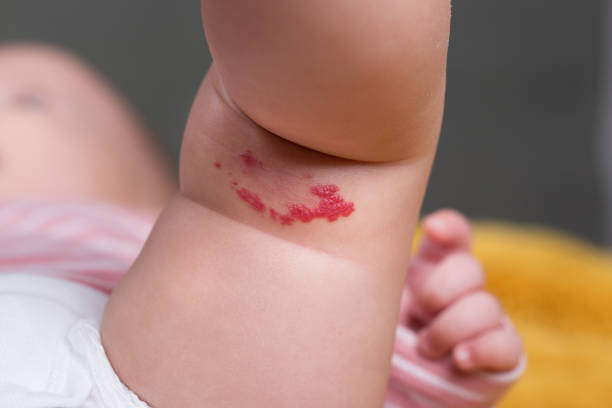Do you find yourself feeling self-conscious about the spider veins on your legs? You’re not alone. Millions of people worldwide suffer from spider veins, which can be a cosmetic concern as well as a source of discomfort and pain. Fortunately, there are various treatment options available that can help reduce the appearance of spider veins and improve overall quality of life. In this article, we will explore the causes, symptoms, and treatment options for spider veins, and provide you with the information you need to make an informed decision about your health.
Procedure Time
30 - 60 Mins
Downtime
Immediate
Back to Work
1 - 2 Days
Results
3 - 6 Weeks
What are Spider Veins?
Spider veins are small, thin veins that can be seen under the skin. They are usually red, blue or purple in color and can look like spider webs or branches. Spider veins are common and usually harmless, but some people may want to have them treated for cosmetic reasons or because they cause discomfort.
It’s important to note that spider veins can sometimes be a sign of an underlying vein condition, such as varicose veins.
If you have spider veins and are experiencing pain, swelling or other symptoms, it’s important to see a doctor to rule out any underlying conditions.
Spider veins are a common and usually harmless condition. If you want to have them treated, there are several options available, including sclerotherapy, laser treatment, vein stripping, and compression stockings. If you’re experiencing any symptoms or discomfort, it’s important to see a doctor to rule out any underlying vein conditions.
What causes Spider Veins?
- Spider veins are caused by a variety of factors, including:
- Genetics – If your family members have spider veins, you may be more likely to develop them as well.
- Age – As you age, your veins may lose elasticity and become weaker, which can lead to the development of spider veins.
- Hormonal changes – Fluctuations in hormones, such as during pregnancy or menopause, can contribute to the development of spider veins.
- Sun exposure – Prolonged exposure to the sun can cause spider veins to appear on the face and legs.
- Obesity – Carrying excess weight can put pressure on your veins and contribute to the development of spider veins.
- Prolonged standing or sitting – Jobs or activities that require prolonged periods of standing or sitting can lead to spider veins.
- Injury or trauma – Injuries or trauma to the skin or veins can contribute to the development of spider veins. While spider veins are not always preventable, there are some steps you can take to reduce your risk, such as maintaining a healthy weight, avoiding prolonged sitting or standing, wearing compression stockings, protecting your skin from the sun, and staying active. If you have a family history of spider veins or are experiencing symptoms, it’s important to talk to your doctor about prevention and treatment options.
Spider Veins Before and After
Here you can clearly see the before and after difference of spider veins. If you want to know more, get yourself a free consultation now at Enfield Royal Saudia.


Who needs Spider Veins Treatment?
Spider veins treatment may be recommended for individuals who:
- Experience pain or discomfort in the affected area
- Feel self-conscious or embarrassed about the appearance of spider veins
- Have a family history of spider veins or other vein conditions
- Have other symptoms such as swelling, itching, or cramping in the affected area
- Have a job or lifestyle that requires prolonged standing or sitting, which can increase the risk of spider veins
- Want to improve the appearance of their legs or face for cosmetic reasons
It’s important to note that spider veins are not always a sign of an underlying medical condition, but if you’re experiencing symptoms or discomfort, it’s important to talk to your doctor to rule out any underlying issues.
Symptoms of Spider Veins
Spider veins are usually asymptomatic, meaning they do not cause any symptoms. However, some people may experience the following symptoms:
- Aching or throbbing pain in the affected area
- Itching or burning sensation around the affected area
- Swelling or inflammation around the affected area
- Fatigue or heaviness in the legs
Restless legs or leg cramps at night
These symptoms may also be a sign of an underlying vein condition, such as varicose veins. If you’re experiencing any of these symptoms or discomfort, it’s important to talk to your doctor to determine the underlying cause and appropriate treatment options.
What are the benefits of Spider Veins?
Here are some benefits of spider vein treatment:
- Improved Appearance: Spider vein treatment can improve the appearance of the skin by reducing or eliminating the appearance of unsightly spider veins.
- Boosted Self-Confidence: Many people feel self-conscious about spider veins on their legs or face, and treatment can help boost their self-confidence.
Reduced Pain: In some cases, spider veins can cause discomfort or pain. Treatment can help reduce or eliminate these symptoms. - Improved Circulation: Spider veins can indicate poor circulation, and treatment can help improve blood flow to the affected area.
- Prevented Complications: Spider veins can sometimes lead to more serious complications, such as blood clots or skin ulcers. Treatment can help prevent these complications from occurring.
- Minimal Downtime: Many spider vein treatments are minimally invasive and require little to no downtime, allowing patients to return to their normal activities quickly.
- Long-Lasting Results: Spider vein treatments can provide long-lasting results, with some procedures offering permanent removal of spider veins.
Procedure of Spider Veins Treatment
Spider vein treatment procedures vary depending on the severity and location of the veins, but here is a general overview of the process:

Consultation
- The first step in spider vein treatment is usually a consultation with a healthcare professional, typically a dermatologist or a vascular specialist.
- During the consultation, the healthcare professional will examine the affected area, discuss treatment options, and provide information about the risks and benefits of each procedure.
Preparation
- Prior to the procedure, the patient may be asked to avoid certain medications or supplements that can thin the blood, such as aspirin or vitamin E.
- The patient may also be asked to wear loose-fitting clothing and avoid applying lotion or cream to the affected area on the day of the procedure.
Procedure
- There are several different procedures that can be used to treat spider veins, including sclerotherapy, laser therapy, and radiofrequency ablation.
- Sclerotherapy is the most common treatment and involves injecting a solution into the vein, which causes it to collapse and eventually fade from view.
- Laser therapy uses focused light to target and heat the vein, causing it to collapse and be reabsorbed by the body. Radiofrequency ablation uses heat generated by radio waves to close off the vein.
Recovery
- Recovery time varies depending on the type of procedure used and the extent of the treatment. Patients may be advised to wear compression stockings to help reduce swelling and improve circulation in the treated area.
- Some procedures may require multiple sessions for optimal results.
Follow-Up
Patients will typically be scheduled for a follow-up appointment to assess the results of the treatment and discuss any additional procedures that may be necessary.
It’s important to note that while spider vein treatment procedures are generally safe and effective, they do carry some risks, including bruising, swelling, and skin discoloration. Patients should discuss the risks and benefits of each procedure with their healthcare professional before making a decision.
Aftercare of Spider Veins
Here are some of the steps that should be followed after treatment
- Wear compression stockings as recommended by your healthcare professional to help reduce swelling and improve circulation in the treated area.
- Avoid strenuous exercise or heavy lifting for a few days after the procedure to avoid putting unnecessary pressure on the treated area.
- Avoid hot baths, hot tubs, or saunas for a few days after the procedure, as heat can increase blood flow to the treated area.
- Avoid exposing the treated area to direct sunlight or tanning beds for a few weeks after the procedure to prevent skin discoloration.
- Take any prescribed or over-the-counter pain medication as directed by your healthcare professional to help manage any discomfort or pain.
- Follow your healthcare professional’s instructions on when to resume normal activities, including work and exercise.
Potential risks of Spider Veins
Here are some risks associated with spider vein treatment:
- Bruising and Swelling: Bruising and swelling are common side effects of spider vein treatment, especially with sclerotherapy. They usually resolve on their own within a few days to a few weeks.
- Skin Discoloration: In some cases, the skin around the treated area may appear darker or lighter than usual. This usually resolves on its own over time, but in rare cases, it may be permanent.
- Infection: There is a small risk of infection with any invasive procedure, including spider vein treatment. Patients should watch for signs of infection, such as redness, warmth, or tenderness around the treated area, and contact their healthcare professional if they experience these symptoms.
- Blood Clots: Although rare, there is a small risk of blood clots forming in the treated veins. This risk is higher in patients with a history of blood clots or other medical conditions that affect blood clotting.
- Allergic Reaction: Some patients may have an allergic reaction to the sclerosant solution used in sclerotherapy. Symptoms of an allergic reaction may include itching, hives, swelling, or difficulty breathing.
- Nerve Damage: In rare cases, spider vein treatment may damage nerves in the treated area, resulting in numbness, tingling, or weakness.
- Scarring: Although rare, there is a small risk of scarring with any invasive procedure, including spider vein treatment. Patients should discuss this risk with their healthcare professional before undergoing treatment.
Steps to minimize the risks
Here are some steps to minimize the risks associated with spider vein treatment:
- Choose a qualified healthcare professional who specializes in spider vein treatment.
- Discuss your medical history and any medications you are taking with your healthcare professional before undergoing treatment.
- Follow your healthcare professional’s instructions on how to prepare for the procedure, including any dietary or lifestyle changes.
- Report any unusual symptoms or side effects to your healthcare professional promptly.
- Wear compression stockings as recommended by your healthcare professional to reduce the risk of bruising, swelling, and blood clots.
- Avoid exposing the treated area to direct sunlight or tanning beds for a few weeks after the procedure to reduce the risk of skin discoloration.
- Follow your healthcare professional’s instructions on post-treatment care, including avoiding strenuous exercise, hot baths or saunas, and heavy lifting.
- Attend all follow-up appointments with your healthcare professional to assess the results of the treatment and address any concerns.
Spider Veins vs Varicose Veins
Spider veins and varicose veins are both conditions that affect the veins in the legs, but there are some key differences between the two:
Spider Veins
- Spider veins are small, thin veins that are visible on the surface of the skin, typically appearing as red or blue lines or web-like patterns.
- They are caused by a backup of blood in the veins, which can be due to a variety of factors, including genetics, hormonal changes, obesity, and standing or sitting for long periods.
- Spider veins are usually not painful, but they can cause discomfort or aching in some cases.
- Treatment options for spider veins include sclerotherapy, laser therapy, and intense pulsed light (IPL) therapy.
Varicose Veins:
- Varicose veins are larger, swollen veins that are visible on the surface of the skin, typically appearing as bulging, twisted cords or ropes.
- They are caused by a malfunction of the valves in the veins, which allow blood to flow backwards and pool in the veins, resulting in swelling and inflammation.
- Varicose veins can be painful, and may cause symptoms such as aching, cramping, itching, and heaviness in the legs.
- Treatment options for varicose veins include vein stripping, endovenous laser treatment (EVLT), radiofrequency ablation, and sclerotherapy.
- While both spider veins and varicose veins can be unsightly and cause discomfort, varicose veins can also be a more serious medical condition that requires prompt treatment to prevent complications such as blood clots or ulcers.
What is the recovery period of Spider Veins?
- The recovery period for spider vein treatment varies depending on the type of procedure performed and the individual’s overall health. In general, however, most patients can expect to resume their normal activities within a few days to a week after treatment.
- Sclerotherapy, which is a common treatment for spider veins, involves injecting a solution into the affected vein to cause it to collapse and eventually disappear. Patients may experience mild discomfort, swelling, and bruising for a few days to a week after the procedure. They should avoid strenuous exercise, hot baths or saunas, and sun exposure for a few days to minimize the risk of complications. Compression stockings may need to be worn for several days or weeks after the procedure to aid in healing.
- Laser therapy is another option for treating spider veins, and involves using a laser to heat and destroy the affected veins. Patients may experience some redness, swelling, and mild discomfort after the procedure, but can usually resume their normal activities right away. Sun exposure should be avoided for a few days after the procedure to reduce the risk of skin discoloration.
- Overall, the recovery period for spider vein treatment is relatively short, and most patients are able to return to their normal routines immediately after the surgery.
Cost of Spider Veins in Riyadh
The cost of spider vein treatment can vary depending on various factors, such as the severity of the condition, the type of treatment used, the location of the treatment facility, and other individual factors. Generally, the cost of spider vein treatment can vary. It’s important to consult with a qualified medical professional to discuss your specific needs and determine the most effective and affordable treatment options available. Additionally, you may want to check with your insurance provider to see if they cover any of the costs associated with spider vein treatment.
FAQs.
Spider veins are usually not a serious health concern, but they can cause discomfort, pain, and embarrassment. However, in some cases, they can be a sign of a more serious underlying condition, and it is important to consult with a qualified medical professional for proper evaluation and treatment.
Treatment options for spider veins include sclerotherapy, laser therapy, and minimally invasive surgical procedures. The best treatment option will depend on the severity of the condition and individual patient factors.
In some cases, spider vein treatment may be covered by insurance if it is deemed medically necessary. However, it is important to check with your insurance provider to determine coverage.
There is no guaranteed way to prevent spider veins, but you can reduce your risk by maintaining a healthy weight, exercising regularly, avoiding prolonged periods of standing or sitting, and wearing compression stockings if recommended by your doctor.
Relevant Treatments.

Varicose Vein Treatment
Varicose veins are a common condition that affects millions of people worldwide. These enlarged and twisted veins, most commonly found in the legs, can cause discomfort and pain, as well as other more serious health issues. If you’re suffering from...

Hemangiomas Treatment
Hemangiomas are tumors that are inherited or congenital masses that appear throughout the early years of life.The principal causes of hemangiomas include the following: Hemangiomas arise when a pregnant mother's placenta experiences...
Relevant Posts

Spider Veins Treatment Cost in Riyadh
Say goodbye to these pesky veins. We have got a perfect solution for you to get rid of it. Say hello to this flawless skin free of spider veins. Our doctors aim to fulfill your desires and goals by giving you flawless and smooth skin. To get more information regarding Spider Veins Treatment Cost in Riyadh give a brief reading to this article Spider veins are lean and visible under the skin, typically exhibiting shades of red, purple, and blue resembling a spider’s web. While they may cause mild discomfort or pain, they are generally harmless and painless. Treatment options for spider veins are relatively





